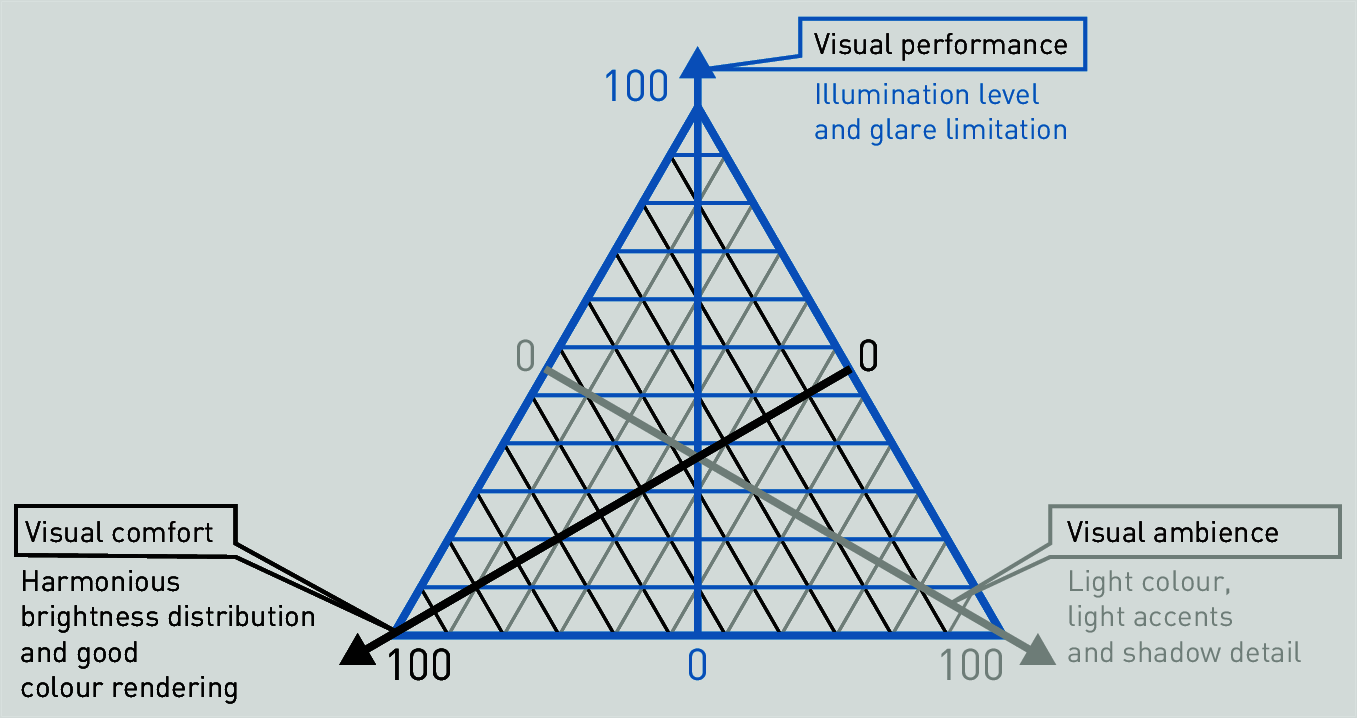The physiological processes of vision, the physical description of the phenomenon of light and the measurement thereof as well as the development of high-performance artificial light sources in particular, have defined the age of electrical lighting for more than 100 years. In the 1960s, it was even believed that artificial lighting of work places was superior to lighting with daylight, e.g. since it could be kept at a constant level 24 hours a day. Windowless schools and open plan offices with mandatory permanent artificial lighting and air conditioning embodied the megalomania of civil engineering. A slogan from that era, "Light turns the night into day", expressed the seeming independence from daylight, and that of fully conditioned work environments from the natural human way of life.
Visual needs
Outdoors, changes in illuminance in excess of 100.000 lx on bright summer days and 0,3 lx by moonlight are perceived to be just as natural as a rather dull-appearing, uniform lighting with clouded or rainy skies and intense shadows as well as bright/dark zones in case of intense sunlight. Rapid and frequent changes in illumination levels and light colour due to passing clouds and the change from the warm light colour of the sunrise to the blue light of mid-day skies to red sunsets are familiar and accepted light situations. Within these limits, among other things, the requirements for lighting can be determined which are necessary to fulfil the needs for
visual performance,
visual comfort and
visual ambience.
With modern lighting concepts, the fulfilments of these three visual needs are realised with differing emphasis. They can therefore also be depicted in a system with triangular coordinates. Chapter "Lighting of sales spaces" offers an example for this: In supermarkets, visual performance is predominant. Visual comfort usually comes second in the lighting concept. In shops for premium goods, visual comfort and visual ambience are focused on when selecting the lighting concept, since they convey an atmosphere of calm, trust and quality. Similar observations apply, for example, for rooms in the healthcare sector (see also chapter , "Illumination of rooms in the healthcare sector") which are mainly occupied by patients and their relatives. In these rooms, a balanced harmony of space and lighting also helps dispel fears and stimulate courage and hope.

Figure 3.1: In this concept, visual performance, visual comfort or visual ambience determine the criteria for lighting